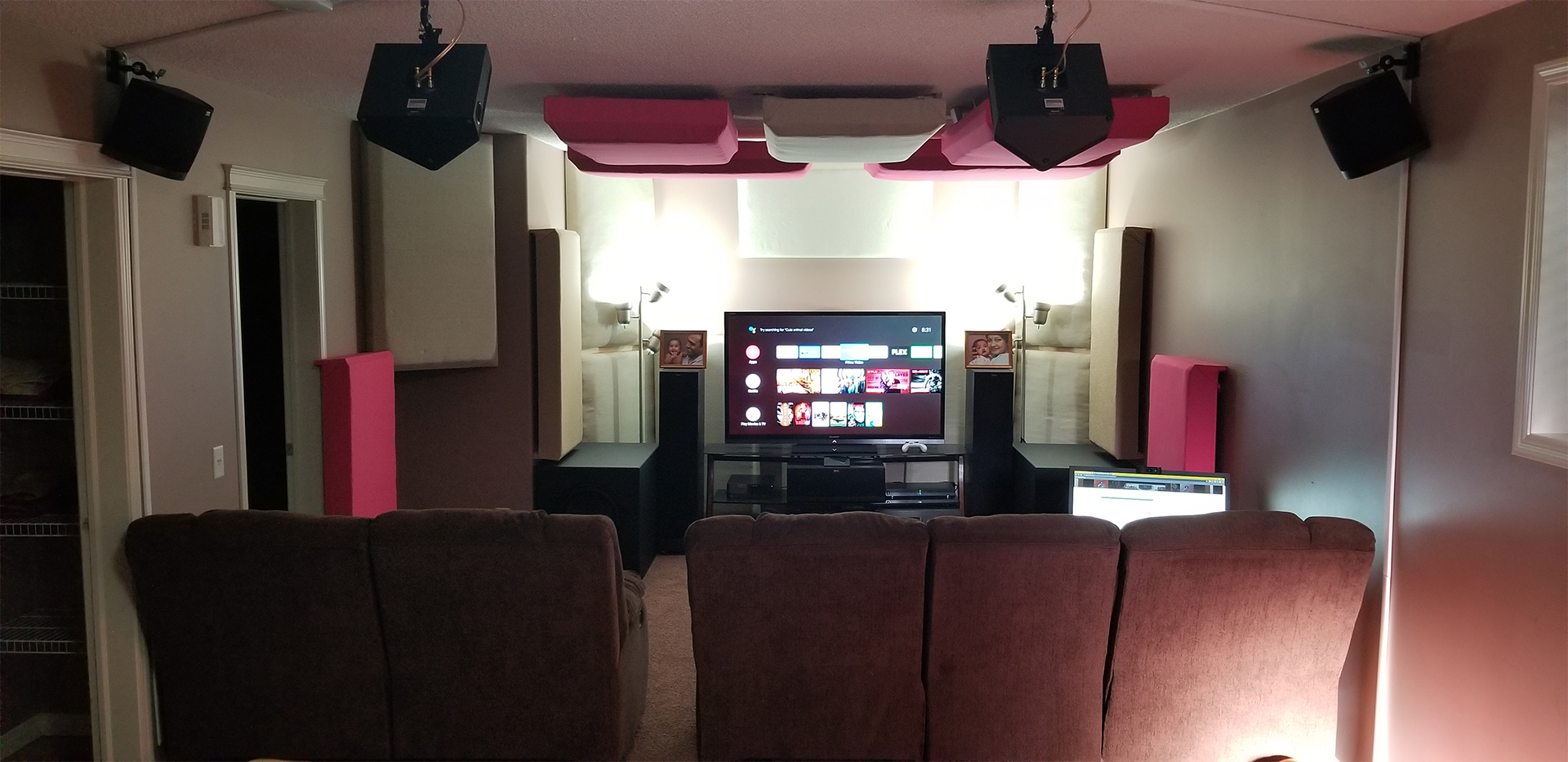Our room form system (https://www.acousticfields.com/free-room-analysis/) allows clients to fill out detailed information regarding their room. Just as important as the information is that they can also upload pictures of their room surfaces. With the data and pics we are then able to discuss with clients regarding their room issues. Sometimes it can be an improper set up that is producing their issues. Most of the time it is too small of a room and they are placing too much energy within it. We have taken some of the pictures we have received and will comment on why what we are seeing in the pics shows that the issues the clients are having have a cause and produce an effect. Most of the issues we see in our room forms are due to improper set up of the electronics and the listening position, lack of the proper rate and level of absorption, especially within the low-frequencies, and the not enough surface area coverage to treat the issues they are having. Let’s take a look at some of the pics we have received and discuss the acoustical issues associated with each one.

In this pic we see a drum room. The room has angled ceiling walls along with small foam middle and high frequency sound absorbing panels installed on the angles of the ceiling. Notice there is no low frequency management within the room and we have a low ceiling height. Drums are the greatest energy producing device next to a gong. They are full frequency sources with the kick drum producing energy that is 40 Hz. A wavelength of 40 Hz. is 28′ long. The tom produces 80 cycle energy which is 14′ long. How is this long wave energy going to fit within the room? The answer is that it won’t. When it doesn’t, we have room modal issues that blur and smear everything we are trying to hear. Unwanted low-frequency pressure issues must be managed by using the proper low-frequency absorption rate and level of absorption. Only diaphragmatic absorption has the horsepower to manage the low frequency issues produced by drums. Panels filled with building insulation will not nor will foam. The small surface area coverage produced by the foam pieces is not enough surface area coverage to have any impact on reducing reflections from the sidewalls. Managing the reflections within the room lowers reverberation times. Lower reverberation times means less room sound and thus less distortion. https://www.merriam-webster.com/dictionary/reverberation

In this pic, we see an improper room set up with a stove directly to the right of the speaker in a two channel system. Sidewall reflections in any two channel system are critical for image positioning and focusing. We must make sure that our sidewall distances are equal and that the reflections from the sidewalls have the same distance to move across the listening position. With two channel sound playback, it is always about creating a balance between the direct energy and the sidewall reflected energy. It is all about reducing the time signature of the reflection so that it arrives at the listening position delayed in time before the direct energy from our speakers. It is always a balancing act between the direct and reflected energy in order to create our stereo soundstage. With an object such as a stove on the right sidewall and no stove on the left sidewall, we create an imbalance for the reflected energy from each sidewall. With this set up we will have an image that does not stay focused between the speakers.

With this pic, we see a common error in choosing a room that works well with the speaker type. In this picture, we see a planar speaker that touches the ceiling. Reflections from room boundary surfaces produce distortion. It is this reflected distortion that washes across the direct energy from our speakers. The combination of direct versus reflected energy is what produces our stereo image. We must balance the direct or straight line energy that comes from our speakers with our room boundary surfaces. With speakers as tall as the room, you will get a phase issue with the ceiling that is close to the speaker. Distance is always our friend when it comes to planar speakers due to their broad radiation patterns. We must have “free space” for the energy to move through the room when it is produced by our speakers regardless of their type. We must stay away from the room boundary surfaces. They are not our friends.

In this home theater setup, we see many issues that are not correct. First, we see the sidewalls have glass pictures down hung on them. Glass is the worst surface you can have in any critical listening environment. The reflections that are produced off of glass have a negative impact on the frequency response of the room. They have a negative impact on frequencies from 200 Hz. – 2,000 Hz. Sound takes on the characteristics of the surface areas it strikes. If it strikes glass it becomes brittle and harsh. This sound is then mixed with the rest of the energy within the room. Care must be taken in any critical listening room to make sure the material types selected are sound friendly. Another set up issue we see in this photo is that the front channel speakers are placed within an alcove. The alcove is its own resonating chamber that will produce energy based upon the dimensions of that opening. The alcove becomes a speaker itself and competes with the energy from the speaker itself. In this set up, we have a speaker within a speaker each with its own frequency response. This produces a phase issue and we do not know what we are listening to. Are we hearing the speakers or are we hearing the alcove itself. speakers must be installed away from all wall surfaces and never in alcoves.

Reverberation Definition: https://en.wikipedia.org/wiki/Reverberation
Drum Platform: https://www.acousticfields.com/product/drum-platform/
Acoustic Fields About Us: https://www.acousticfields.com/about/







